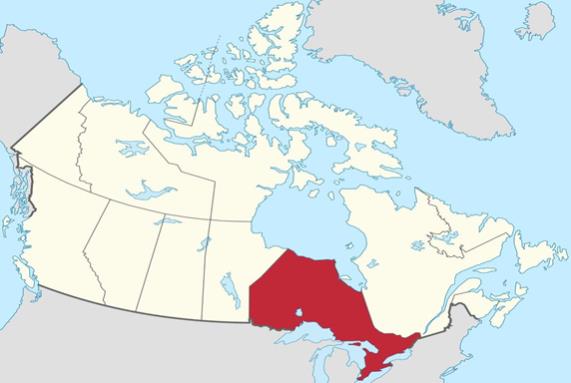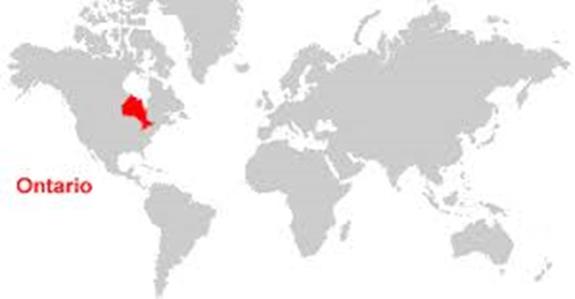Ontario Electricity Industry
Ontario Electricity Financial Corporation (OEFC), a Crown agency, is the legal continuation of Ontario Hydro and is responsible for the management of that corporation’s debt and other liabilities that were not transferred to successor companies as part of the restructuring of Ontario Hydro in 1999, including the administration of certain power purchase agreements with non-utility generators. As at March 31, 2018, OEFC had total debt of $19.1 billion (2017, $20.4 billion). $12.8 billion of OEFC’s debt as at March 31, 2018 (2017, $14.1 billion) is held by the Province and included in total debt and other liabilities.
Ontario Hydro’s successor companies include Ontario Power Generation Inc. (OPG), a generation business wholly owned by the Province, and Hydro One Inc., a transmission and distribution business. Hydro One Inc. is now a subsidiary of Hydro One Limited (“Hydro One”). Following an initial public offering on November 5, 2015 and subsequent share sales in 2016 and 2017, the Province now holds about 47.4% of the common shares in Hydro One. On July 19, 2017, Hydro One announced an offer to acquire Avista Corporation (Avista), for $6.7 billion CAD (USD $5.3 billion). The proposed acquisition, if it moves forward to financial close, would dilute the Province’s ownership of Hydro One common shares by approximately 5 percentage points. On November 21, 2017, Hydro One announced that Avista shareholders voted 98 per cent in favour of the proposed acquisition by Hydro One. On December 5, 2018, Hydro One and Avista received a regulatory decision from the Washington Utilities and Transportation Commission (UTC), denying the proposed merger of the two companies. On December 10, 2018, Hydro One indicated that it and Avista would be filing a petition no later than December 17, 2018 with the UTC requesting the UTC to reconsider its decision. Legislation restricts the Province from selling shares such that it would own less than 40% of the voting securities in Hydro One. The other Ontario Hydro successor companies are the Independent Electricity System Operator (IESO), the electricity system and market operator, and the Electrical Safety Authority, which is responsible for electricity safety inspection.
Pursuant to various transfer orders (“Transfer Orders”), assets of the former Ontario Hydro were transferred to OPG, Hydro One Inc. and the IESO in exchange for debt. The Province assumed a portion of OPG’s and Hydro One Inc.’s debt in exchange for equity, in order to provide them with commercially acceptable capital structures. As of March 31, 2018, OEFC held notes receivable in the amount of $3.5 billion from OPG, $120 million from the IESO and $6.9 billion from the Province. OEFC provided indemnities, guaranteed by the Province, to OPG and Hydro One Inc., in connection with the Transfer Orders; those indemnities were terminated as of May 31, 2006 and October 31, 2015 respectively.
As of April 1, 1999, the Ministry of Finance estimated the amount of OEFC’s debt and other liabilities that, in the opinion of the Minister of Finance, could not reasonably be serviced and retired in a competitive electricity market (the “stranded debt”) to be approximately $20.9 billion. OEFC’s unfunded liability is the net deficiency of OEFC’s assets over its liabilities. The opening unfunded liability of $19.4 billion as at April 1, 1999 represented the stranded debt adjusted for $1.5 billion of additional assets transferred to OEFC. OEFC’s unfunded liability as at March 31, 2018 was $1.3 billion.
As part of the restructuring of the electricity sector, a long-term plan provides for certain dedicated revenue streams to service and retire OEFC’s debt and other liabilities. These revenue streams are established under the Electricity Act, 1998 (“Electricity Act”) and include payments-in-lieu of property taxes and federal and provincial corporate income taxes currently paid by OPG and the municipal electricity utilities. As a result of the initial public offering on November 5, 2015, Hydro One is no longer subject to payments-in-lieu of federal and provincial corporate income taxes and is subject to normal corporate income taxes. Hydro One remains subject to paying payments-in-lieu of property tax. The Minister of Finance has legislative authority and is required to make payments to the OEFC equal to the amount of provincial corporate tax payable by Hydro One Inc. under the Taxation Act, 2007.
The Province, as shareholder, is eligible to receive dividend payments on its shares in OPG and Hydro One. Pursuant to the government’s discretionary commitment to keep electricity income in the electricity sector, the Province’s proportionate share of the cumulative combined net income of OPG and Hydro One in excess of the Province’s cumulative interest expenditure on its investment in the companies has been allocated since 1999 to OEFC for purposes of debt retirement (“electricity sector dedicated income”).
Under the Electricity Act, 1998, a Debt Retirement Charge (DRC) of 0.7 cents per kilowatt hour was levied on most Ontario electricity users and payable to OEFC. Prior to January 1, 2016, the DRC was payable by most electricity consumers. As of January 1, 2016, residential electricity users will be exempted from paying the DRC. The government introduced legislation, passed on December 10, 2015, the Budget Measures Act, 2015 to legislate a fixed end-date for the DRC of April 1, 2018, for commercial, industrial and all other users.
The Electricity Act and the Ontario Energy Board Act, 1998 set out the legislative framework for Ontario’s electricity market and restructuring of Ontario Hydro. Open, non-discriminatory access to transmission and distribution systems commenced May 1, 2002. Since 2005, electricity prices payable by consumers reflect a blend of contract prices, regulated prices for OPG’s output from its price-regulated nuclear and hydroelectric plants, and market prices. Regulated prices for OPG are approved by the Ontario Energy Board (OEB). The OEB also sets the commodity price payable by low volume and certain other specified consumers under the Regulated Price Plan (RPP). The IESO finances any differences between prices under the RPP and the actual supply cost of electricity, with any shortfall or surplus to be recovered or returned through the setting of RPP prices in the following period.
43


